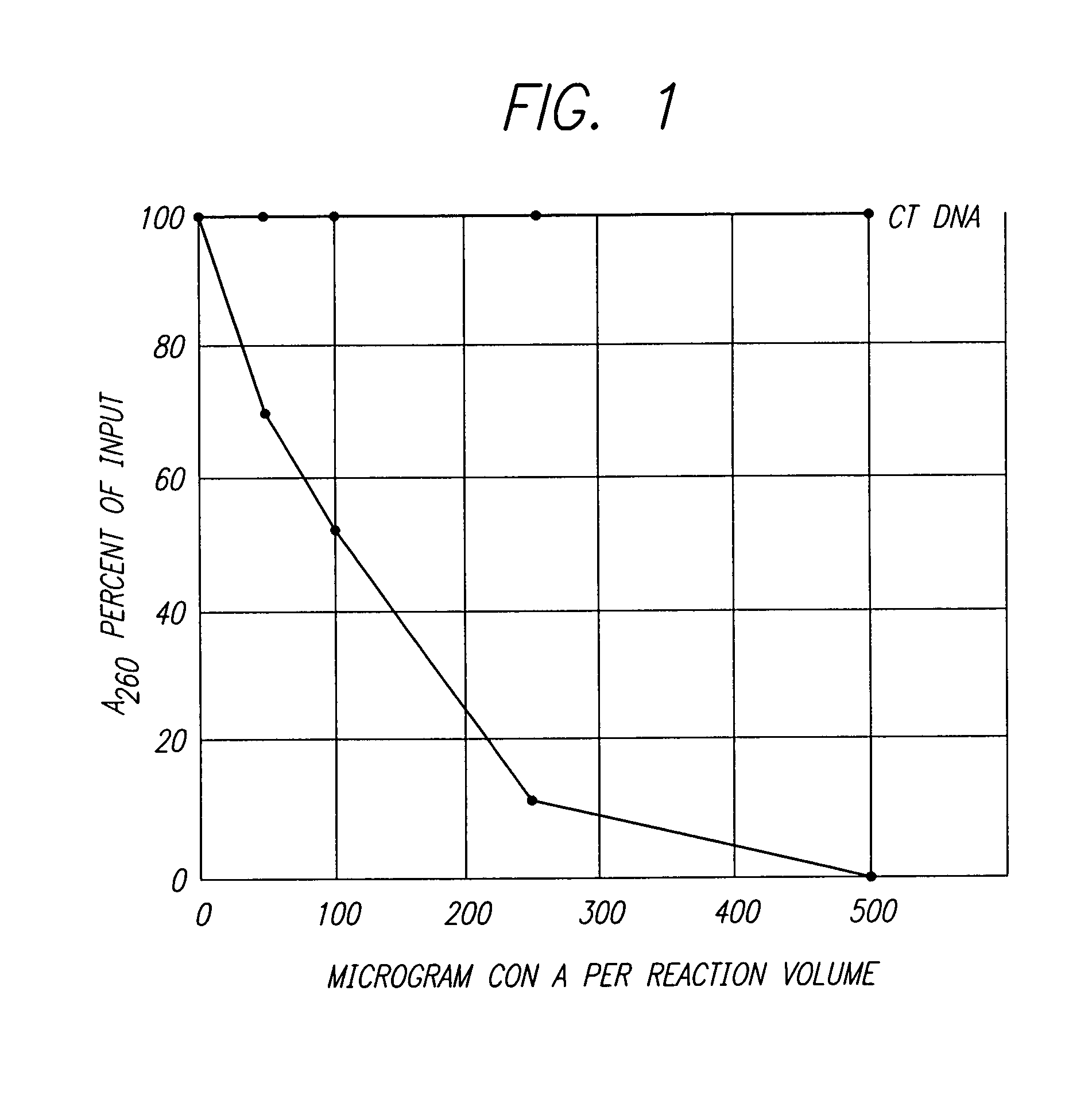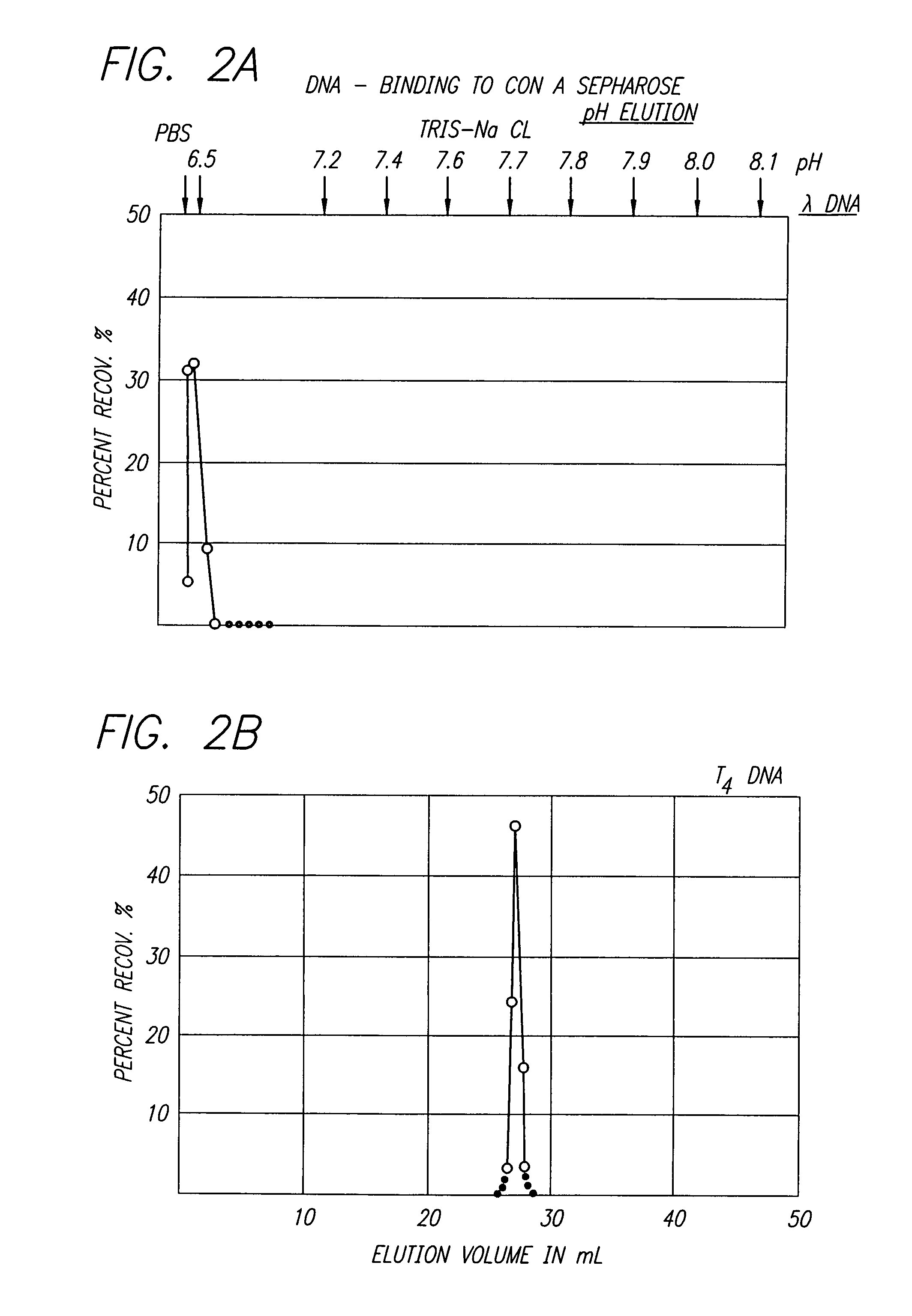Nucleic acid sequencing processes using non-radioactive detectable modified or labeled nucleotides or nucleotide analogs, and other processes for nucleic acid detection and chromosomal characterization using such non-radioactive detectable modified or labeled nucleotides or nucleotide analogs
a technology of nucleic acid and labeling, which is applied in the direction of peptides, enzymology, dna/rna fragmentation, etc., can solve the problems of radioactive labeling materials that have a relatively short shelf life and present hazards
- Summary
- Abstract
- Description
- Claims
- Application Information
AI Technical Summary
Benefits of technology
Problems solved by technology
Method used
Image
Examples
example ii
[0029]Biotinyl-1,6-diaminohexane amide was prepared as follows: A solution of 1,6-diaminohexane (320 mg, 2.0 mmol), dissolved in 50 ml water, was brought to pH 8.5 by addition of carbon dioxide. Biotinyl-N-hydroxy-succinimide ester (100 mg, 0.29 mmol), dissolved in 10 ml dimethylformamide, was added. After 18 hours at room temperature the mixture was evaporated and the residue washed with ether and subsequently dried in a dessicator.
example iii
[0030]Polybiotinylated poly-L-lysine was prepared by the following procedure. Polylysine (100 umol lysine) dissolved in 2 ml 0.1 M sodium borate, pH 8.5 was added to biotinyl-N-hydroxysuccimide ester (17.5 mg, 50 umol) dissolved in 0.5 ml dimethylformamide. After stirring at room temperature for 18 hours, the mixture was dialyzed against 10 mM tris buffer, pH 7.5.
example iv
[0031]Oligodeoxyribonucleotides were end-labeled using cytidine-5′-triphosphate and terminal transferase as follows. Purified phage DNA, alkali sheared with 0.2 N sodium hydroxide and diluted to 2 A260 units / ml in potassium cacodylate (0.1 M), tris base (25 mM), cobalt chloride (1 mM) and dithiothreitol (0.2 M) were used. To this DNA solution (1 ml) was added cytidine-5′-triphosphate (10 mmol) and terminal transferase (200 units).
[0032]After incubating at 37° C. for 5 to 8 hours the reaction was stopped by the addition of neutralized phenol (100 ul), 0.5 M EDTA (100 ul) and 1% sodium dodecyl sulfate (100 ul). The DNA was purified by gel filtration chromatography through Sephadex® G-100 followed by precipitation with ethanol.
PUM
| Property | Measurement | Unit |
|---|---|---|
| pH | aaaaa | aaaaa |
| pH | aaaaa | aaaaa |
| pH | aaaaa | aaaaa |
Abstract
Description
Claims
Application Information
 Login to View More
Login to View More - R&D
- Intellectual Property
- Life Sciences
- Materials
- Tech Scout
- Unparalleled Data Quality
- Higher Quality Content
- 60% Fewer Hallucinations
Browse by: Latest US Patents, China's latest patents, Technical Efficacy Thesaurus, Application Domain, Technology Topic, Popular Technical Reports.
© 2025 PatSnap. All rights reserved.Legal|Privacy policy|Modern Slavery Act Transparency Statement|Sitemap|About US| Contact US: help@patsnap.com



